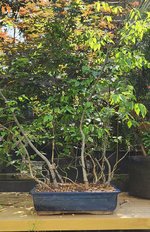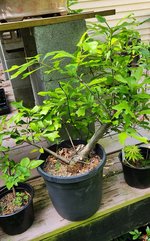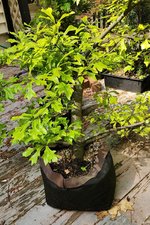Lcogginz
Seedling
So, all the learning on bonsai has me finally learning what the trees are on our land--we're on about 3 acres with an acre or so cleared. So far I've identified:
- White ash (my husband tried to convince me for years we had pecan trees but we never saw a single pecan so I had my doubts )
)
- Eastern redbud
- Wild black cherry
- Hackberry (celtis occidentalis)
- Autumn olive (cannot express how much I HATE THIS PLANT)
- Willow oak
- Water Oak
- Sweetgum
As best I can tell, none of these are highly interesting from a Bonsi standpoint. I'm curious about the hackberry and the redbud since it sounds like they tolerate collection well, but mostly doubtful I have any winners. Any thoughts from the experienced folks here?
- White ash (my husband tried to convince me for years we had pecan trees but we never saw a single pecan so I had my doubts
- Eastern redbud
- Wild black cherry
- Hackberry (celtis occidentalis)
- Autumn olive (cannot express how much I HATE THIS PLANT)
- Willow oak
- Water Oak
- Sweetgum
As best I can tell, none of these are highly interesting from a Bonsi standpoint. I'm curious about the hackberry and the redbud since it sounds like they tolerate collection well, but mostly doubtful I have any winners. Any thoughts from the experienced folks here?



